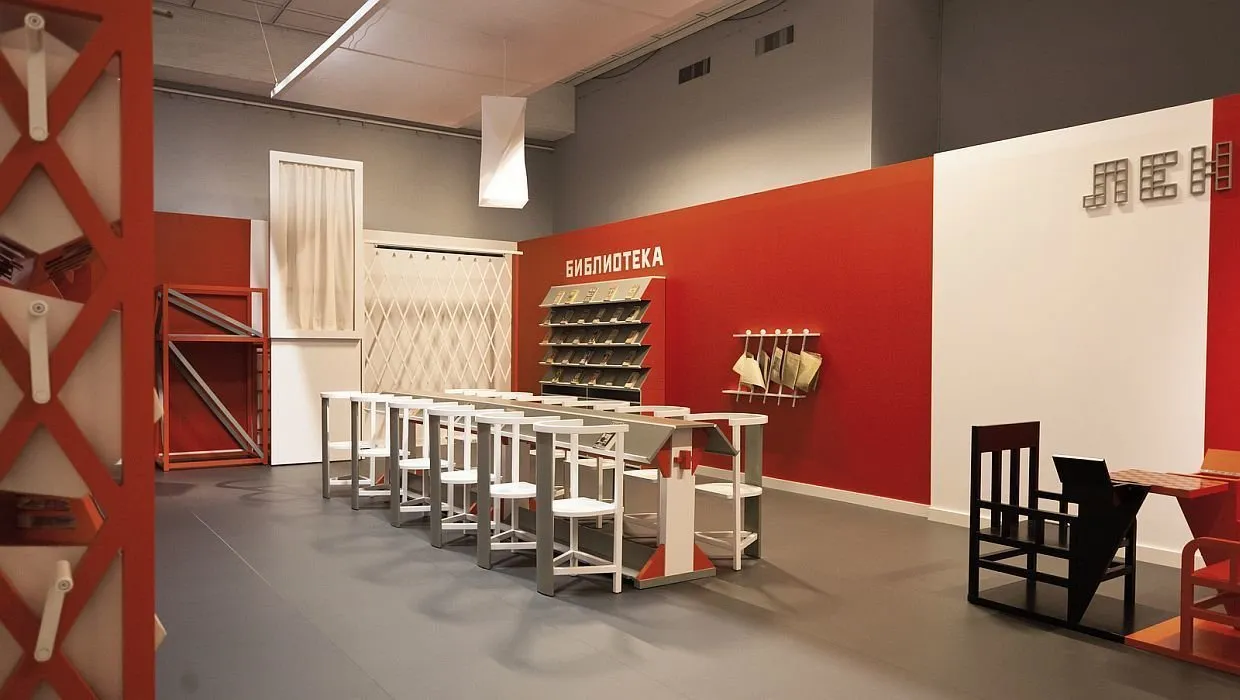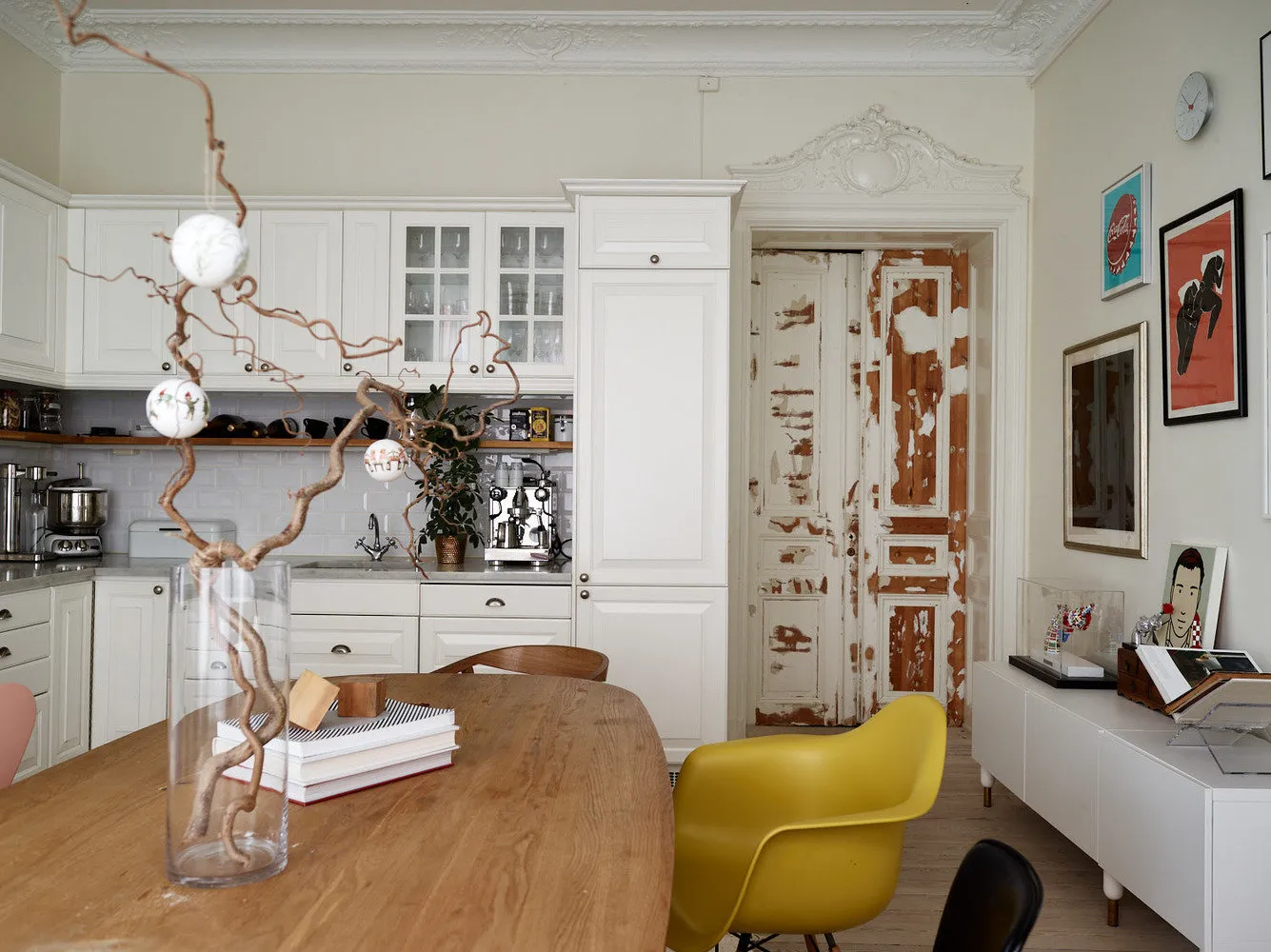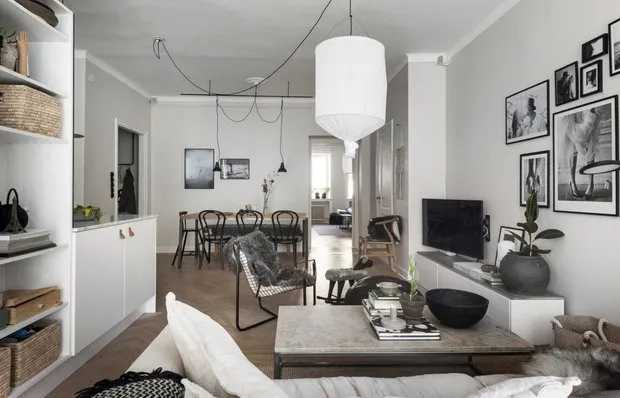There can be your advertisement
300x150
10 Iconic Creations by Soviet Designers
Soviet design, by definition, was primarily intended for the country and only then for personal needs. All design decisions and technological innovations belonged either to institutes or design bureaus. Therefore, only a small number of inventions had credited authors. This article focuses on these iconic creations.
Avant-Garde Service Set
After the October Revolution, the Leningrad Porcelain Factory (now IFZ) began producing items that were 'revolutionary in content, perfect in form, and flawless in technical execution.' The factory involved avant-garde artists in its collaboration.
Kazimir Malevich created a tea service—a whimsical combination of geometric shapes: instead of traditional cup forms, semispheres with rectangular handles, and instead of traditional decoration, white color. The artist wanted to change the perception of how everyday items could look.
Malevich's convenient tableware was not practical, but that wasn't part of his goal. As the artist himself said: 'This is not a teapot, but the idea of a teapot.' By the way, this avant-garde service set is still produced at the Imperial Porcelain Factory today.

Furniture Transformer
At the 1925 World Exhibition in Paris—the first international exhibition where the Soviet Union participated—Alexander Rodchenko presented a multifunctional space. An embodiment of the ideals of a new society looking toward the future.His 'Worker's Club' was not just a room in the constructivist style, but an ergonomic space where Soviet workers could perform, engage in self-education, and spend leisure time.
The club furniture was multifunctional—each piece occupied little space and could easily transform into another. For example, to save space, the chess table was equipped with a rotating board, allowing players to change piece colors without leaving their seats.
For his project, Rodchenko received a silver medal. After the exhibition concluded, the exhibit was gifted to the Communist Party of France. However, in 2008, German specialists reconstructed the club for their exhibition 'From Flatness to Space. Malevich and Early Modernism.' They later donated a replica to the Tretyakov Gallery for its significant contribution to organizing Russian avant-garde exhibitions in European museums.

Label for Condensed Milk
In the late 1930s, artist and graphic designer Iraida Fomina prepared several label designs in different styles for Soviet condensed milk. However, the blue-and-white design was officially adopted, intended for tin cans with a 325 ml capacity. The design was so successful that even today, this sketch is used as one of the most recognizable brands both in Russia and abroad.
Georgian Glass and Beer Mug
According to legend, the creator of the sculpture 'Worker and Kolkhoz Woman' together with Kazimir Malevich invented the Georgian glass with a rim. However, this is not true. Vera Mukhina only refined its shape, making the glass more durable and suitable for Soviet dishwashers of the 1940s. However, Vera indeed created the design for the Soviet beer mug herself.
Car 'Pobeda'
In 1943, the development of new vehicles at GAZ began under the leadership of Andrei Lipgart, including the light GAZ-25, which was intended to be named 'Rodina'. According to one legend, in June 1945, the model was shown in the Kremlin to Stalin, who asked: 'When will you sell the "Rodina"?' After that incident, the car was renamed to 'Pobeda' and put into mass production. However, Generalissimo also did not consider the name 'Pobeda' appropriate: 'A small victory!' Military personnel even requested the designer to make the cabin higher so that one could get in without removing the felt cap.
The car was taken off production in 1957, but it could still be seen on roads for many years. Not only in the Soviet Union—for example, in Finland, almost all taxis were 'Pobedas'.

Sleeper Car
Attention to passenger comfort only started in the mid-1940s, when people returned from evacuation. The Ministry of Transport announced a competition to design an open-type passenger car with wooden shelves. The winner, 26-year-old designer Yuri Soloviev, later wrote in his memoirs: 'The first thing I did was replace the flat wooden sofas with concave ones, making it more comfortable to sit and lie on. Then I decided not to lower the upper shelf as was always done, but raise it so that bedding could be left on the shelf'.
The interior of the car was spacious and bright: in addition to the designer's original attachment for the upper shelves, the first time were used drop-down tables, foldable ladders, and mirrors that visually expanded the space. For the new project, all elements were redesigned from scratch: switches, lights, hooks, and holders.
Furniture Wall
The struggle against architectural excesses in the late 1950s led to rapid development of standardized construction. Bulky pre-war furniture didn't fit into small Khrushchev apartments, so new lightweight and compact furniture was needed.
Yuri Sluchevsky was a leading expert at the Institute of Furniture of the USSR and was responsible for standardization and unification. His work coincided with the rapid development of European furniture design, which in the early 1960s was focused on new forms and structures. It was Sluchevsky who developed the prototype of a modular furniture wall—original system that allowed adjusting the width and height of the entire furniture construction. He also introduced new dimensions for Khrushchev apartments.
In the new living space, where simple forms of furniture dominated, interior items played a special role: vases, figurines, sculptures.
Radio 'Rigonda'
No party in the 1960s could be imagined without radios, among which the 'Rigonda' model was undoubtedly the leader—a stylish radio on long elegant legs, typical of industrial modernism in the middle of the 20th century. The radio got its name from the island in Vilius Lačys's novel 'Lost Homeland'.
The design was created by the famous Latvian artist Adolf Irbite, whose works received top awards at international exhibitions—first in Paris in 1937 and then in Brussels in 1958. Irbite also worked in book illustration, developed corporate logos, and packaging.
Camera 'Zenit'
Vladimir Rungе was the creator of well-known Soviet cameras 'Zenit', which were produced in record numbers—over 8 million units. Early 'Zenits' had a removable eyepiece ring that allowed installing the glasses' dioptric lens for correcting the photographer's vision. The camera became a symbol of the thaw era, and most photos in family albums around the world were taken with 'Zenits'.
Table Lamp
Most of the lights designed by architect Mikhail Olenyev were intended for museums, banks, and hotels. However, in 1968 he created a lamp that matched European standards in quality and appearance—ergonomic, lightweight, and without excess. The lamp had no personal name—it was simply called 'Table Lamp'.
Georgy Danelya in his memoirs 'Ticketless Passenger' described Olenyev like this: '…he always stayed up with us late—was very enthusiastic. He would overlay his draft with tracing paper, take his favorite soft charcoal pencil 'Kohinoor 6V', think and draw the project on the tracing paper… Then he would draw something funny near the building for scale: a bearded old man on a scooter, a firefighter on swings, a poster stand with a dog's leg raised… When I was designing the Southern Railway Station, he drew a bagpiper on the platform and in the sky—a flying helicopter with a man in railway uniform jumping out of it'.
Photo on the cover: Personal Experience: How We Furnished an Apartment Without a Designer
More articles:
 Interior in Sweden in the Style of Ironic Eclecticism
Interior in Sweden in the Style of Ironic Eclecticism Personal Experience: What's Wrong with Marie Kondo's Method?
Personal Experience: What's Wrong with Marie Kondo's Method? 8 Secrets of Cozy Scandinavian Kitchens
8 Secrets of Cozy Scandinavian Kitchens What Designers Buy at IKEA
What Designers Buy at IKEA Graphic and Cozy Interior of a Loft in Stockholm
Graphic and Cozy Interior of a Loft in Stockholm Large-scale plan: how to help the planet right now
Large-scale plan: how to help the planet right now Not Just Maison & Objet: 10 Ideas for Spending Time in Paris
Not Just Maison & Objet: 10 Ideas for Spending Time in Paris Large Format: What Is the Pantone Color Institute and What Does It Do
Large Format: What Is the Pantone Color Institute and What Does It Do